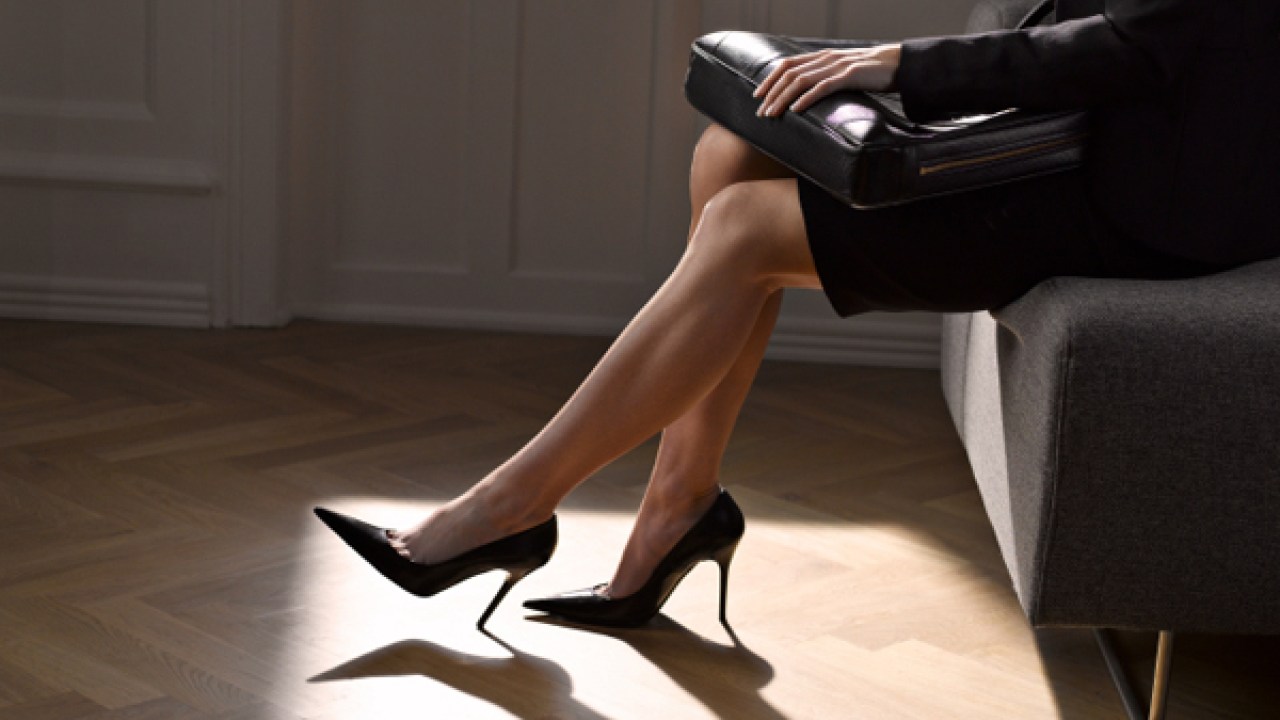Top tips for a comfortable commute
Regularly wearing high heels can lead to pain and discomfort, but there are steps you can take to help keep your feet comfortable, even during your commute.
For many women, a high-heeled shoe can provide the perfect finishing touch to any outfit, helping them to look stylish and put-together. This is especially true in the business world, with almost a third of women choosing to wear high heels to work but, while they can help you to look and feel more professional, doing the commute in stilettoes can pose significant challenges.
Pain and problems
Of course, we all know that wearing high heels can cause pain and discomfort, especially on the balls of your feet, but it can also cause longer term foot and leg problems and can even lead to injuries.
Wearing high heels can strain your ankles and surrounding tissues, leading to tendonitis, while the pressure placed on your toes can cause bunions, hammer toes and ingrown toenails. The extra pressure on the front of the foot can also cause pinched nerves, and even stress fractures!
What’s more, over-use of high heels can wear away your foot’s natural cushioning, causing the fat pads on the bottom of your feet to become thinner. For this reason, many regular high heel wearers find themselves suffering from generalised pain on the soles of their feet, even when they’re wearing flats.
And it’s not just your feet that suffer. Long-term high heel users often experience painful back and knee issues, caused by standing in an unnatural position for long periods of time.
Choose the right shoe
Of course, the best solution is to ditch the high heels altogether – or, at the very least, wear flat, comfortable, well-fitting shoes for the commute and change into your heels once you reach the office.
However, if for whatever reason you’re reluctant to say goodbye to your heels, there are steps you can take to help improve your comfort levels. Firstly, make sure that any high-heel shoes you are wear fit you well and are suited to the shape of your foot – as a general rule, people with wide toes should avoid pointed shoes, while people with flat arches should stick with a heel height of 3 inches or lower.
The type of shoe you wear can also make a difference. Platforms tend to be more comfortable than stiletto heels, and shoes with a strap offer more security and stability than those without, helping to minimise the risk of blisters. The higher the heel, the more discomfort it is likely to cause, so where possible, try to opt for a lower heel height – shoe repair shops can often reduce the heel by up to one inch to help make your shoes more comfortable. You can also purchase special insoles for heels that can help to relieve the pressure on the balls of your feet.
Pain relieving exercises
In addition to ensuring your shoes are as comfortable as they can possibly be, you can also undertake a number of stretching exercises to provide much-needed relief to your feet after a day spent walking in high heels. Alongside these daily exercises, treat your feet to a massage and a DIY foot bath with warm water and a handful of epsom salts to soothe and revive tired feet. And don’t forget to give your feet regular breaks throughout the day by removing your shoes when you’re sat at your desk.
You don’t have to sacrifice style for comfort. By choosing the right shoes, exercising regularly and treating your feet well, you can minimise pain and discomfort, and continue to wear your high heels for work and play.
